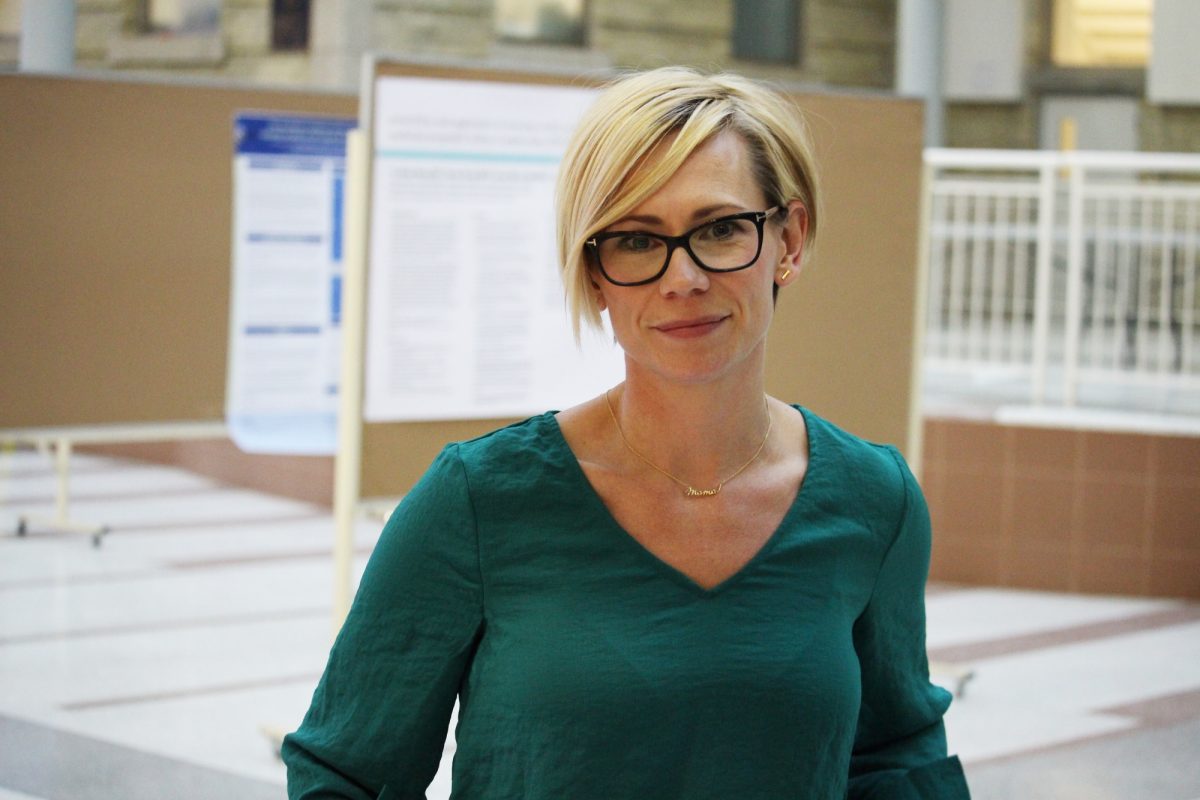
PhD candidate Tara Horrill says access to oncology care can be difficult for First Nations people, particularly those on reserves.
First Nations face challenges accessing cancer care in Manitoba, study says
First Nations cancer patients in Manitoba are being diagnosed at later stages than other Manitobans, likely a result of barriers that limit access to oncology care for Indigenous Peoples across Canada, according to a doctoral candidate at the College of Nursing, Rady Faculty of Health Sciences.
PhD candidate Tara Horrill and Dr. Annette Schultz, professor in the College of Nursing, recently published a study in BMC Cancer, an international peer-reviewed journal, comparing cancer incidence, stage of diagnosis and outcomes between First Nations and all other Manitobans. The study was funded by the U of M’s University Indigenous Research Program (UIRP) grant and had input from several university academics, decision-makers and Indigenous community partners.
From her doctoral research, Horrill also published a systematic review of access to oncology care for Indigenous people across Canada in Social Science & Medicine, another international journal, in October.
She said First Nations cancer patients also have poorer survival rates than other Manitobans, another disparity which may result from obstacles they face at various levels of diagnosis, treatment and care.
Horrill describes Canada’s health-care system as fragmented and complicated for status First Nations people living on reserves, where health-care access is funded and sometimes delivered by the federal government. Oncology care, however, is specifically funded and delivered at the provincial level. She noted this jurisdictional gap sometimes leads to governments disputing funds while patients are waiting for care.
“At the individual level, a First Nations patient may not have good access to primary care within their community. They may also have limited financial resources, so they may not be able to afford transportation to a different health-care centre. Add in barriers at the systems and structural level, and accessing care can be very difficult,” she said.
While these compounding barriers explain the later-stage diagnoses, the fact that First Nations cancer patients had higher death rates and shorter survival times is harder to explain, Horrill said.
“We factored the stage at diagnosis into our statistical models, so what we found wasn’t related to that. We don’t know from these results specifically why the outcomes are worse, but we can guess,” she said, noting the impact of social inequities linked to historical and ongoing government policies, resulting in differences in income, education, housing and clean drinking water.
Horrill hopes that by clearly identifying the gaps in care, decision-makers will have the evidence required to address these barriers and provide Indigenous patients with cancer the same level of care as everyone else.
“From reviewing other research looking at access to cancer care, one of the things we saw was that most, if not all Indigenous patients experience some level of discrimination or racism when trying to access services, which impacts access to care and health outcomes,” she said.
Horrill, who was born and raised in Morden, Man., does not come from an Indigenous background, but was drawn to her research after working as an oncology nurse at CancerCare Manitoba for almost 10 years.
“When you look someone in the eye and they tell you their story of going to their health-care provider over and over and not getting the services they need, I feel a certain sense of obligation to use the knowledge and training I have to make a difference,” she said.
Horrill received her bachelor’s degree in nursing from the U of M in 2005. In 2014, she returned to the university to pursue a master’s degree, and then fast-tracked into the College of Nursing’s PhD program. She is currently wrapping up a portion of her doctoral research that looks at health-care provider perspectives on access to oncology care for Indigenous populations.
While she misses the clinical work, Horrill noted conducting research allows her to think creatively and have an impact in a different way.
“When you’re working with patients directly, you can see the impact that you’re making,” she said. “You don’t necessarily see that with research, but research can impact policy and practice on a much bigger level, and indirectly make patient experiences better.”






